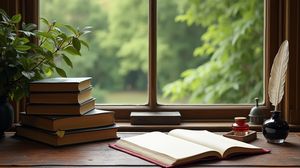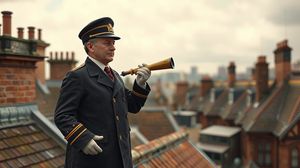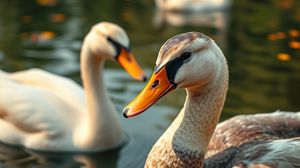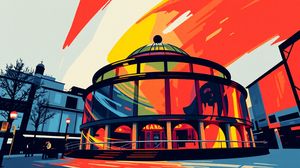
Once the home of Sigmund Freud, the father of psychoanalysis, the Freud Museum in Hampstead provides a unique glimpse into his life and work. Freud fled from Vienna to London in 1938, seeking refuge from the Nazis, and set up his final residence at 20 Maresfield Gardens until his death in 1939.
Visitors to the museum can explore Freud's study, which remains much as it was during his time, complete with his original psychoanalytic couch where his patients reclined during their sessions. The room is filled with the personal artifacts and antique pieces that Freud brought with him from Vienna, including over 2,000 historical and archaeological items that reflect his passion for antiquities.
Freud was fascinated with ancient cultures, and this interest is evident in the impressive collection of Egyptian, Greek, Roman, and Oriental antiquities displayed throughout the museum. These artifacts are not just decorative; they reflect Freud's theories that tied deep, ancient meanings to human psychology.
One slightly odd but interesting fact about the museum is that it is not entirely focused on Freud alone. After Freud's death, his daughter, Anna Freud, continued to live in this house for many years. She was a pioneering child analyst and her contributions and legacy are also highlighted in the museum.
The museum also hosts various temporary exhibitions and events related to psychoanalysis, art, and even contemporary issues, making it not just a place of history but also a living site for intellectual exchange and exploration.
For those interested in understanding the pioneering aspects of psychology and the personal story of Sigmund Freud, a visit to the Freud Museum offers insight into his mind, his family life, and the intimate space where he reflected on the human condition.

Making the Most of Your Visit:
Take your time in Freud's study: Spend ample time in Freud's study. It's the heart of the museum and remains much as when he lived there. Notice the details in the room, such as the glass-encased collection of ancient figurines lining the shelves. Each piece has a story and reflects Freud's deep appreciation for ancient cultures.
Check the temporary exhibitions: Besides the permanent collection, the museum often hosts temporary exhibitions that bring in contemporary flair or dig deeper into different facets of psychoanalysis. It's worth checking online in advance to see if there's a special exhibit that piques your interest.
Seek out Anna Freud's legacy: While the museum centers on Sigmund Freud, don't miss the sections dedicated to his youngest daughter, Anna Freud. Though less known, her contributions to child psychology are monumental, and her living quarters remain, offering a glimpse into her life and work.
Enjoy the garden: The museum's garden is a lovely spot for a quiet moment. It's a great place to reflect on what you've seen or relax with a book on psychology. The garden is well-maintained and offers a peaceful respite from the hustle and bustle of Hampstead.
Bookshop treasures: The museum's bookshop offers an excellent range of books on Freud, psychoanalysis, and related subjects. They often stock texts that are hard to find elsewhere, making it a treasure trove for enthusiasts. Plan to spend a little time browsing their offerings at the end of your tour.

Visiting Times & Costs:
The Freud Museum in Hampstead is open to the public and welcomes visitors throughout the year. Its usual opening hours are Wednesday to Sunday, from 10:30 AM to 5:00 PM. Note that it is closed on Mondays and Tuesdays, except for certain bank holidays which can vary annually.
Entrance fees apply, and the cost details are shown in the table below:
| Category | Price |
|---|---|
| Adults | £14 |
| Concessions (students, seniors, job seekers) | £12 |
| Children under 12 | Free |
| Family (2 adults + up to 3 children) | £25 |
It is recommended to book tickets in advance, particularly for special exhibitions or events.
Regarding accessibility, the museum building is a historic Grade II listed house, which may present some challenges for those with mobility issues. However, efforts have been made to improve access, including a stair lift to the first floor where the main exhibitions are. Visitors are advised to contact the museum prior to visiting to discuss their specific accessibility needs.

Address & Map:

Nearby:























